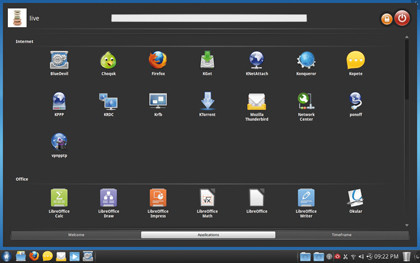How Mandriva was built
Sacked developers, financial headaches and technology trials - a tough year for Mandriva
New release cycle

Talking about Mandriva's new release cycle, Komissarov says that preliminary testing of versions (alpha, beta, release candidates) involves hundreds of people and takes about six months. For Mandriva 2011 there were eight releases before the final version, and the entire process involved more than 200 testers spread over 28 towns in 10 countries, who solved more than 2,000 issues.
Major releases such as Mandriva 2011 require a huge amount of infrastructure. According to Koryavov, the developers produced more than 1,500 ISO images for testing, although not all of them were available publicly.
Testing the images involved downloading more than 10TB of data. Once testing was finished the official release was announced and every official version of Mandriva Linux will now be supported for 18 months.
Mandriva 2011 was aimed at home desktop users and the developers are now working on a November Long Term Release (LTS) version for the enterprise that will be supported for three years. Komissarov explains that the LTS release probably won't have bleeding edge software but will most definitely be a lot more stable, which works well for businesses.
New features

Mandriva 2011 has a host of notable new features. It uses the KDE desktop, but has revamped the UI of most of its components and also added some new tools. Based on experience, Komissarov says that while KDE is a great desktop environment, its broad range of settings may confuse inexperienced users.
He cites the example of an experiment wherein a KDE-based distribution was used to teach in Russian schools. The project had to be abandoned because students and teachers were confused by its various settings.
Mandriva's main challenge while designing the new interface was to keep things simple for new users, and expose just the right amount of settings. Komissarov says the team spent a considerable amount of time investigating the behaviour of an average desktop user in a bid to create a distro with virtually no learning curve. It found that users are more productive and prefer running applications in full-screen mode.
Sign up for breaking news, reviews, opinion, top tech deals, and more.
SimpleWelcome is the main element, which will be developed further - it's not only a program launcher but also a universal container for other original components that are in the pipeline.
TimeFrame - a new utility added to Nepomuk - visualises files in your home directory based on the time they were created or modified. This saves you the trouble of having to look for files buried deep within multiple folders.
RocketBar implements a software-oriented interface that is more convenient and easier for users to understand. Research by Mandriva suggests that a typical user works with an average of about 12 apps. The most used are on the panel and those used less often are stored in the history of Last Used apps, which lets users access the apps in one or two mouse clicks.
StackFolders resembles the stacks feature in Mac OS X and Komissarov believes that users who work with a large number of documents will find this particularly useful.
Mandriva 2011's new installer has simplified the installation process by implementing the concept of 'pure choice'. While it won't please some advanced users, Komissarov believes that most people are only confused by the many installation options in Linux distro installers.
There have been changes to various other parts of the desktop as well, and many are still under active development. The absence of the option to switch between multiple desktops is just one of the changes to the system tray, which will be further tweaked in upcoming releases.
New community

Mandriva has always had a strong community of users and developers. Community manager Adam Williamson really invigorated the scene until he was asked to leave in December 2008. The regular rounds of lay-offs obviously took their toll, but it was the liquidation of Edge-IT and the subsequent fork into Mageia that really made the community lose confidence in Mandriva.
Komissarov points out that by the time he got the opportunity to influence Mandriva's future, a core team of developers had already gone, and with them went the community. Having a community is important, but first Mandriva needed a product worth rooting for.
Explaining the new team's priorities, Komissarov says it was important to find a new vector of development, and create a distro which focused on usability and design. He thinks Mandriva's focus on usability will attract a community like the Italian Mandriva International Backports.
The MIB is actively involved in Mandriva's Assembly, and provides a repository of packages for many Mandriva releases. During the entire development process, Mandriva always looked to the community for feedback - in addition to testing the various pre-releases, it also asked for suggestions for its new build system.
Viacheslav Kaloshin, CTO of PingWin, has kept the community abreast with the development of Mandriva 2011 via the official blog. Mandriva is at the beginning of a new journey. The distro is built. Komissarov knows that what's important now is building a new community.
------------------------------------------------------------------------------------------------
First published in Linux Format Issue 151
Liked this? Then check out 10 best Linux distros for 2011
Sign up for TechRadar's free Week in Tech newsletter
Get the top stories of the week, plus the most popular reviews delivered straight to your inbox. Sign up at http://www.techradar.com/register
Follow TechRadar on Twitter * Find us on Facebook * Add us on Google+

With almost two decades of writing and reporting on Linux, Mayank Sharma would like everyone to think he’s TechRadar Pro’s expert on the topic. Of course, he’s just as interested in other computing topics, particularly cybersecurity, cloud, containers, and coding.